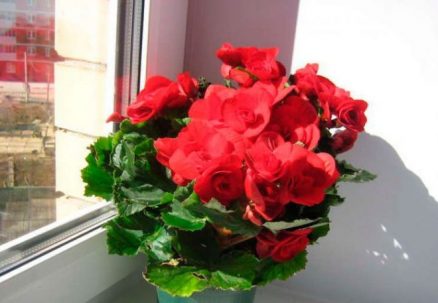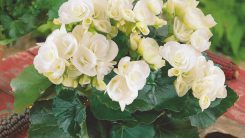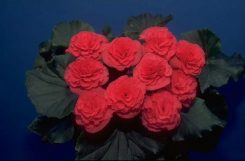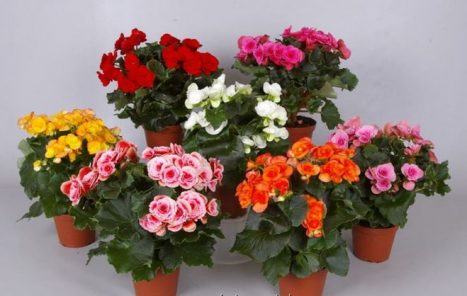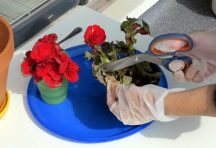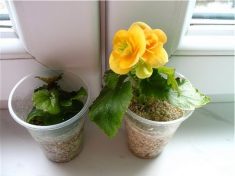Begonia Elatior captivates the eye: against the background of glossy leaves, spectacular flowers look amazing. Often this indoor flower is presented in the form of a presentation for any reason. The lush plant differs from other species in its beauty and abundant flowering twice a year. This incredibly beautiful flower was bred as a result of a hybrid cross between two varieties of begonia. During growing at home, begonia is modest, but has its own nuances. Beautiful begonia Elatior combines all the best qualities of tuberous and Socotran species.
Material Content:
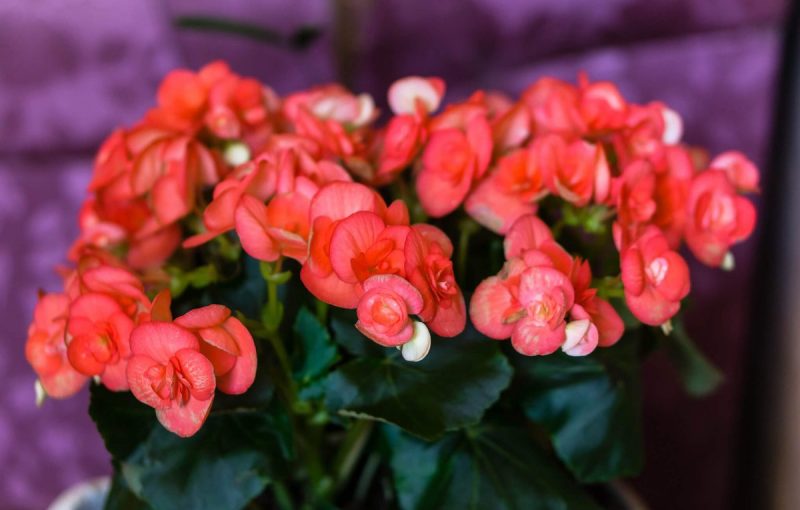
Begonia Elatior: description and nuances of growing
In adulthood, the shrub can reach 40 cm, it is distinguished by fleshy stems. Dense leaves have the shape of an asymmetric heart, along the edges of the leaves are framed by a beautiful serrate border.
Depending on the variety, the flowers have a diverse color. On long peduncles grow beautiful inflorescences. All forms of this hybrid are divided into tall, stunted, mid-sized.
A houseplant requires special attention, because begonia is susceptible to negative conditions, constant stressful situations.
Optimal conditions
In order for a plant to grow and develop comfortably, it needs sunlight. In this case, you must protect from direct sunlight. From the excess of the sun, lush terry flowers will noticeably turn pale. The hybrid belongs to plants that require a short color day, so it does not need additional winter lighting.
To ensure a beautiful and lush flowering, perennial must be kept in a warm room, where the air temperature does not drop below 18 degrees. If beautiful begonia is kept at lower room temperatures, then root rot can attack it, which can lead to the immediate death of a fragile flower.
Begonia beauty is demanding on the humidity of room air: it does not tolerate overdried air, but it also does not need to be sprayed. In order to increase air humidity in the district, a lovely begonia is placed on a pallet with wet moss or expanded clay.
Read also:evergreen begonia
How often should I water the plant
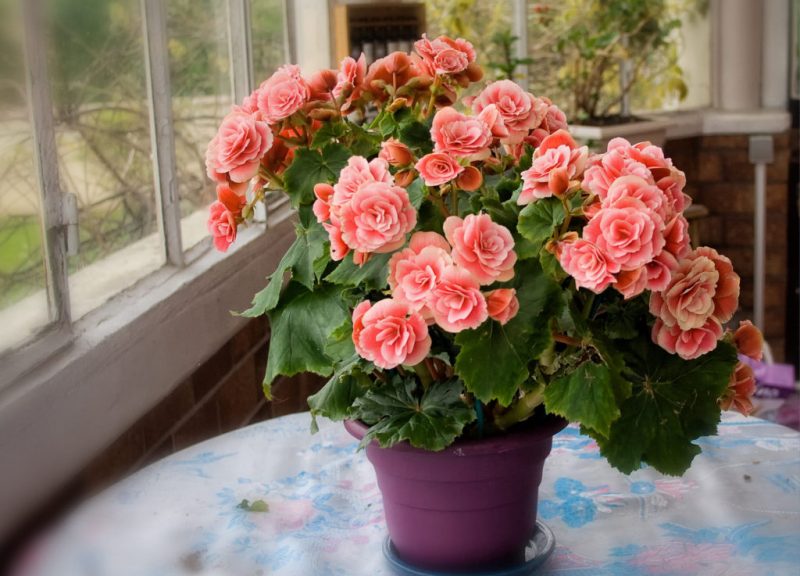
Beauty Elatior requires moderate moisture, you need to do this after drying the earth coma to the middle. It does not tolerate stagnation of moisture in the pallet, because of this, decay begins in the fragile roots.
How often to water a flowering plant? As the earthen coma dries up. Begonia is better than underfilling than pouring, because excess moisture is very dangerous for her life.
Fertilizer application
Feeding is carried out very carefully. For this purpose, complex fertilizers based on minerals are used. The beauty of begonia does not react well to organics, so they are not advised to add it, an excess of nitrogen makes the stems thin, transparent and brittle. After adding organic matter, the flowering becomes more scarce, and the inflorescences do not look so impressive.
All summer, the necessary fertilizers are added to the soil in the complex, which contain a sufficient amount of phosphorus and healthy potassium. The lack of these nutrients can slow down the growth of the plant, contributes to the appearance of yellow tips on the lush leaves.
Diseases and Pests
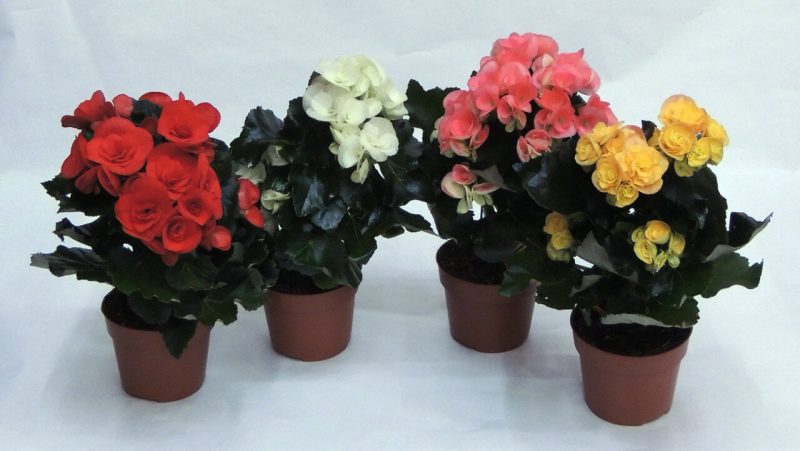
Improper watering of a whimsical begonia can lead to mold on its beautiful buds. If this happens, then it is treated with effective fungicides.
Sharp temperature changes in the house and dry room air can become the reasons for the development of powdery mildew. If a white coating appears on the leaves and stems, then this just indicates this disease. The affected bush is treated with a fungicide solution.
Spider mites or aphids affect home begonia. If the pests have not yet managed to multiply, then a couple of sprinkles of soapy solution are enough. When there are too many insects, then spraying “Karbofos” is indispensable.
When to transplant a flower after purchase
When purchasing a flowering plant, do not rush to transplant it; it is poorly tolerated by this procedure. Beauty Elator is very demanding on the composition of the soil, it must be nutritious, loose, retain moisture well, dry quickly. You can purchase the finished mixture or cook it yourself. To do this, you need leaf humus, greenhouse peat, large river sand or perlite.
If transplantation is nevertheless required, then after the acquisition it is necessary to wait 2-3 weeks when the begonia starts to produce fresh sprouts, adapting to new conditions. Only after this time can it be transplanted.
If an adult plant is purchased, then it is better to leave it to grow and develop in a transport pot. Adult begonias are sold as a one-time bouquet; after purchase, cuttings are cut and rooted from it.
Begonia Elatior: propagation by cuttings and seeds
Beauty begonia can be propagated in two simple ways: ripened seeds and cuttings. At the same time, seed reproduction is a painstaking process, it is almost impossible to collect material from an indoor plant due to microscopic sizes, and young seedlings will grow from the selected seeds, but they cannot fully retain their maternal properties. This is a feature of hybrid varieties.
Propagation of begonia by cuttings is much simpler, for this purpose leafy cuttings are cut in spring or summer, or stems are cut.
To increase the resistance of the material to various fungal diseases, chopped petioles for rooting are placed in perlite, and they can also be rooted in ordinary water if you add a little charcoal there. Sliced petioles should be at least 7 cm high.
The stalk is placed in a dark place for 2 months. After this period, the petioles begin to sprout. Then you need to move the seedlings to a lighted place.
Transfer
After the end of the harsh winter period in early March, begonias are transplanted. This procedure must be carried out once every 2-3 years. For this purpose, choose a pot 3 cm larger than the previous one in diameter. During the transplantation, the root system is shaken off the ground, the roots are placed in a weak solution of potassium permanganate for an hour. You also need to carefully inspect the roots, rotten and damaged areas are eliminated. After transplanting, do not forget to give begonias frequent watering, but at the same time do not fill it too hard, monitor the moisture level.
How to care at rest
From November to March, begonia is at rest. To prepare it in domestic conditions, you need to simply stop abundant watering. The ground part of the plant will slowly begin to die, so it is cleaned in a cool place. The root system is preserved and restores the ground part in the spring. At this time, a temperature of 18-20 degrees is enough for her. The frequency and abundance of watering is reduced by three times.
Elatior begonia care at home
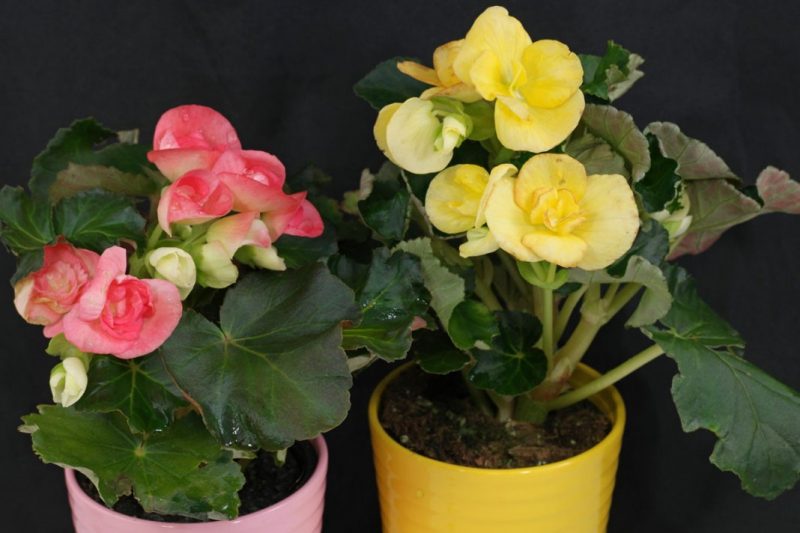
High-quality care for begonia will help extend its life and natural beauty. Perennials grow old quickly, so you need to take care of regular pruning of begonias, pinching the top so that it does not come out much up. During circumcision, old leaves are removed, the lower processes, creating an obstacle to aeration of the basal part. The first pruning is performed when the plant has reached 7 cm.
The miniature bush is given the desired shape, watering is not given until growth begins. Upon reaching the sprouts 12 cm, they are again cut off over the entire diameter.
Experienced gardeners do not advise using scissors to trim the begonias, they can be harmful, it is enough to have a sharpened knife.
Begonia beauty reacts very sensitively to any changes in the environment, therefore it is very important to monitor all vital indicators when growing it.


